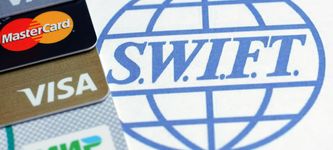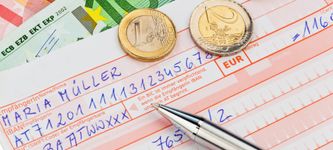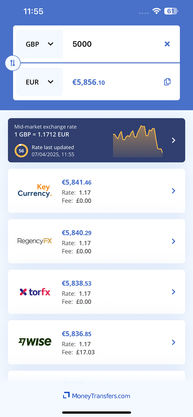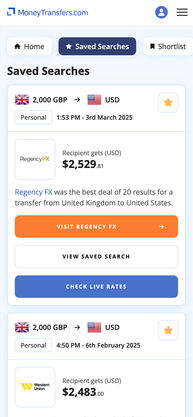Sort Code vs SWIFT Code: Which One Do You Need for Your Transfer?
In this guide we will identify the different uses of sort codes and SWIFT codes, comparing their functions side by side, to clear up any confusion that may arise during the process of arranging a money transfer.
Find SWIFT/BIC codes
Money can be transferred in a multitude of different ways: from paying a vendor for goods and services, to using a mobile app to send funds to a friend; and some transactions require more information than others. Unlike a contactless purchase in a restaurant or store, arranging a money transfer from one country requires specific details.
In this guide we will look at the differences and similarities between sort codes and SWIFT codes, in a bid to lift the lid on the common types of banking jargon likely to emerge when making cross-border transactions.
What is a sort code?
Sort codes are used by British and Irish banks to identify the location of a domestic bank, so that financial institutions can recognize where the payment has originated from or validate where it is being sent to. Also known as sorting codes, or a national sort code (NSC) in Ireland, these codes can be found integrated into an IBAN (International Bank Account Number) but they have no relation to SWIFT or BIC codes.
What is a SWIFT code?
SWIFT codes are used in the Society for Worldwide Interbank Financial Telecommunication network. They are used to identify the bank location, country, and branch number when initiating an international transfer.
A SWIFT code is an alternate format of a BIC (Bank Identification Code) and the terms are interchangeably used.
Format
Sort codes
Sort codes are made of 6 numbers, divided into 3 pairs, for example: 12-34-56
SWIFT codes
SWIFT codes are a bit more complicated as they can range from 8 to 11 alphanumeric characters. These characters are divided into different subcategories: bank name, country, address and bank branch.
For example: AAAABBCCDDD
AAAA: Bank code. These 4 letters usually look like a shortened version of the bank name
BB: Country code. These two letters represent the country the bank is in
CC: Location code. These two characters will indicate where the bank’s head office is located
DDD: Branch code. The last three characters will indicate the specific branch of the bank
How they work
Sort codes
Sort codes are used by domestic banks and financial institutions only. They work by identifying accounts and providing instructions needed to route money transfers domestically within clearance organizations.
SWIFT codes
When a payment is sent via the SWIFT network, messages are passed between banks (as well as non-bank financial corporations) in a secure, encrypted way. Funds are not physically transported using the SWIFT network, only the instructions; this communication facilitates the money transfer.
Where they're used
Sort codes
Sort codes are used by UK and Irish banks only; they are only used for international transactions when the payment is sent via bank transfer.
SWIFT codes
SWIFT codes are used by 212 countries, all of whom utilize the SWIFT network. Over 11,000 financial institutions use this network; banks, foreign exchange brokers, clearing houses, depositories, brokering institutes, trading houses and asset management companies.
Where they can be found
Sort codes
Sort codes can be found on bank-issued cards, statements and via online banking. For customers still using cheque books, sort codes are also printed here as well.
SWIFT codes
SWIFT codes can be found on bank statements and by logging into online banking accounts. Alternatively, customers can contact the bank directly to confirm the SWIFT code.
Use SWIFT codes internationally, use sort codes in the UK and Ireland
We hope this guide has proven helpful and eradicated any confusion users may be experiencing when locating the specific banking details required for certain money transfers. Sort codes will only be required for domestic bank transfers sent between British and Irish account holders, or when sending money to the UK or Ireland from abroad. SWIFT codes, however, are used to identify a bank account when verifying an international money transfer. Check out some of our related content below for more information about arranging cross-border payments.
Related content


Related Content
Contributors




